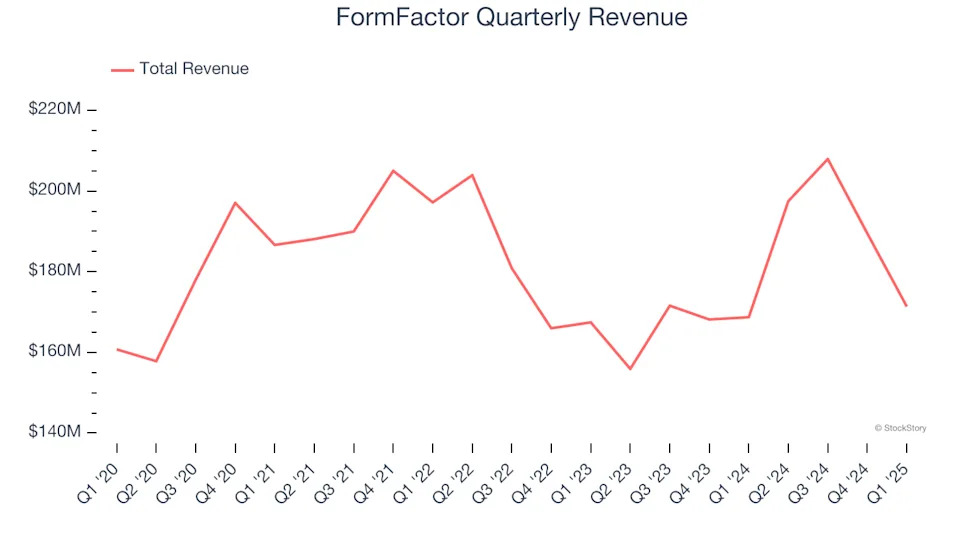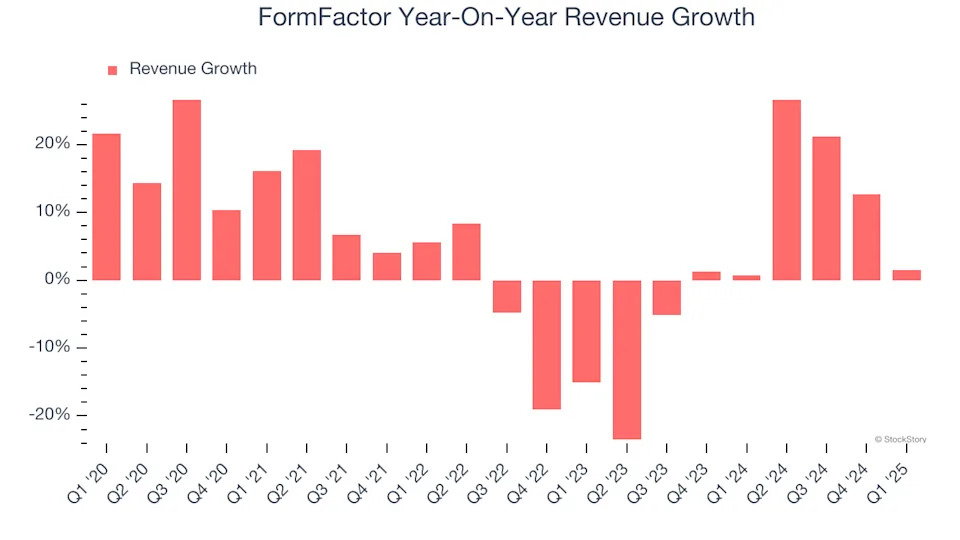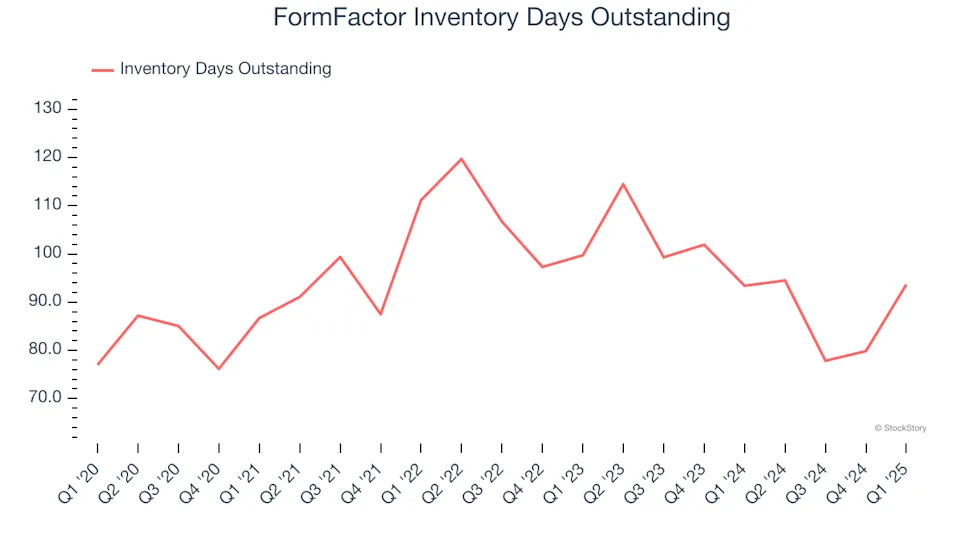Semiconductor testing company FormFactor (NASDAQ:FORM) beat Wall Street’s revenue expectations in Q1 CY2025, with sales up 1.6% year on year to $171.4 million. Guidance for next quarter’s revenue was better than expected at $190 million at the midpoint, 2% above analysts’ estimates. Its non-GAAP profit of $0.23 per share was 21.1% above analysts’ consensus estimates.
Is now the time to buy FormFactor? Find out in our full research report .
FormFactor (FORM) Q1 CY2025 Highlights:
“As expected, FormFactor reported sequentially lower first-quarter revenue and profitability due to anticipated reductions in demand for both DRAM probe cards and Systems,” said Mike Slessor, CEO of FormFactor,
Company Overview
With customers across the foundry and fabless markets, FormFactor (NASDAQ:FORM) is a US-based provider of test and measurement technologies for semiconductors.
Sales Growth
A company’s long-term performance is an indicator of its overall quality. Any business can have short-term success, but a top-tier one grows for years. Over the last five years, FormFactor grew its sales at a sluggish 4.4% compounded annual growth rate. This fell short of our benchmark for the semiconductor sector and is a tough starting point for our analysis. Semiconductors are a cyclical industry, and long-term investors should be prepared for periods of high growth followed by periods of revenue contractions.

We at StockStory place the most emphasis on long-term growth, but within semiconductors, a half-decade historical view may miss new demand cycles or industry trends like AI. FormFactor’s recent performance shows its demand has slowed as its annualized revenue growth of 3.3% over the last two years was below its five-year trend.

This quarter, FormFactor reported modest year-on-year revenue growth of 1.6% but beat Wall Street’s estimates by 0.9%. Despite the beat, this was its third consecutive quarter of decelerating growth, indicating a potential cyclical downturn. Company management is currently guiding for a 3.8% year-on-year decline in sales next quarter.
Looking further ahead, sell-side analysts expect revenue to grow 5.5% over the next 12 months. While this projection implies its newer products and services will catalyze better top-line performance, it is still below the sector average.
Software is eating the world and there is virtually no industry left that has been untouched by it. That drives increasing demand for tools helping software developers do their jobs, whether it be monitoring critical cloud infrastructure, integrating audio and video functionality, or ensuring smooth content streaming. .
Product Demand & Outstanding Inventory
Days Inventory Outstanding (DIO) is an important metric for chipmakers, as it reflects a business’ capital intensity and the cyclical nature of semiconductor supply and demand. In a tight supply environment, inventories tend to be stable, allowing chipmakers to exert pricing power. Steadily increasing DIO can be a warning sign that demand is weak, and if inventories continue to rise, the company may have to downsize production.
This quarter, FormFactor’s DIO came in at 94, which is one day below its five-year average. These numbers show that despite the recent increase, there’s no indication of an excessive inventory buildup.

Key Takeaways from FormFactor’s Q1 Results
We were impressed by how significantly FormFactor blew past analysts’ EPS expectations this quarter. We were also excited its adjusted operating income outperformed Wall Street’s estimates by a wide margin. On the other hand, its inventory levels materially increased. Overall, we think this was a solid quarter with some key areas of upside. The stock traded up 5.2% to $29.55 immediately after reporting.
FormFactor had an encouraging quarter, but one earnings result doesn’t necessarily make the stock a buy. Let’s see if this is a good investment. The latest quarter does matter, but not nearly as much as longer-term fundamentals and valuation, when deciding if the stock is a buy. We cover that in our actionable full research report which you can read here, it’s free .





